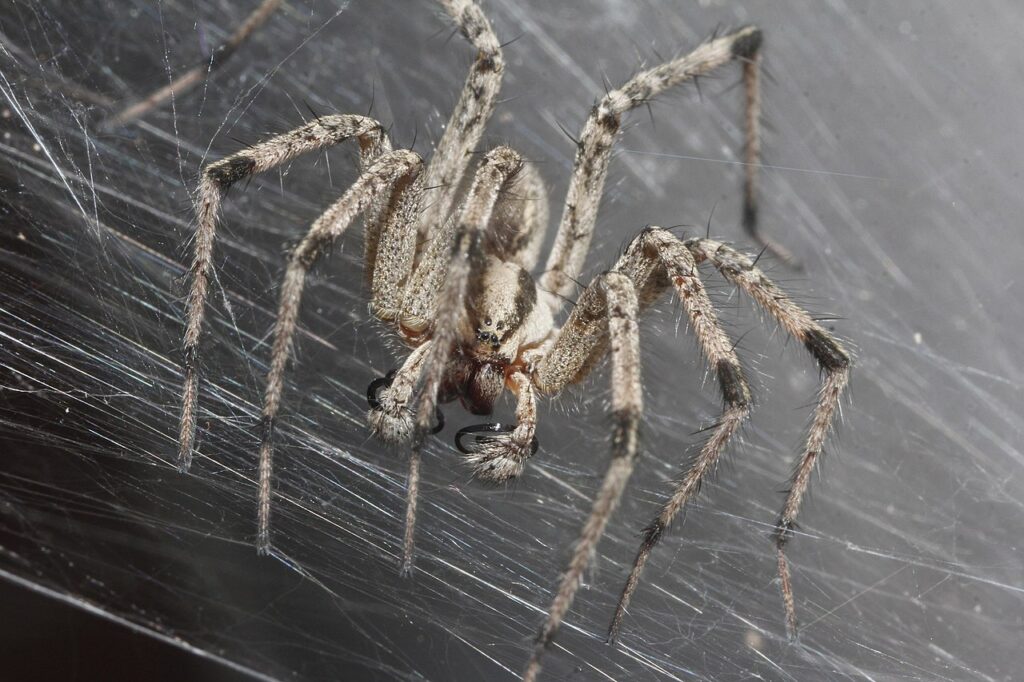
Appearance
Wolf spiders are large, fast-moving arachnids that can range in size from 1/2 inch to 1 1/2 inches. They are often dark brown with a distinctive hairy appearance that helps them blend into their environment. The wolf spider has eight eyes arranged in three rows: the middle row has two large eyes, while the bottom row consists of four smaller eyes. Their quick movement and ground-dwelling habits make them unique among spider species.
Wolf Spider Habitat and Behavior
Wolf spiders are primarily ground hunters and are often found in burrows or under debris like rocks and logs. Unlike web-building spiders, wolf spiders rely on their speed and keen vision to catch prey, such as insects, rather than using webs. They are nocturnal, hunting at night for their meals. Wolf spiders are common in a variety of habitats, including forests, grasslands, and even urban environments where they can find shelter. Females are known to carry their egg sacs with them, and after hatching, the spiderlings ride on the mother’s back until they are ready to disperse.
Are Wolf Spiders Dangerous?
Although wolf spiders may look intimidating due to their size and speed, they are generally not dangerous to humans. They rarely bite, and their venom is not harmful to people. If bitten, the effects are usually mild, similar to a bee sting, and subside quickly. Studies show that wolf spider bites cause minor effects and are generally harmless (source). Despite their fearsome appearance, wolf spiders are beneficial predators, helping to control pest populations in gardens and homes.
Wolf Spider Control Methods
While wolf spiders are not typically harmful, their presence in homes may be unsettling for some. Here are some effective control methods:
- Sanitation and Habitat Modification: Reduce outdoor clutter, such as woodpiles, rocks, and leaves, to eliminate potential hiding spots.
- Physical Removal: If you find a wolf spider indoors, safely capture it using a jar or container and release it outside.
- Chemical Control: In cases of infestation, a pest control professional may apply perimeter treatments, though this is rarely necessary for wolf spiders.
Wolf spiders play a critical role in the ecosystem by controlling insect populations, making them beneficial despite their somewhat alarming appearance. Keep wolf spiders outside where they belong with our preventative pest control plans. Contact us today to safeguard your home!
